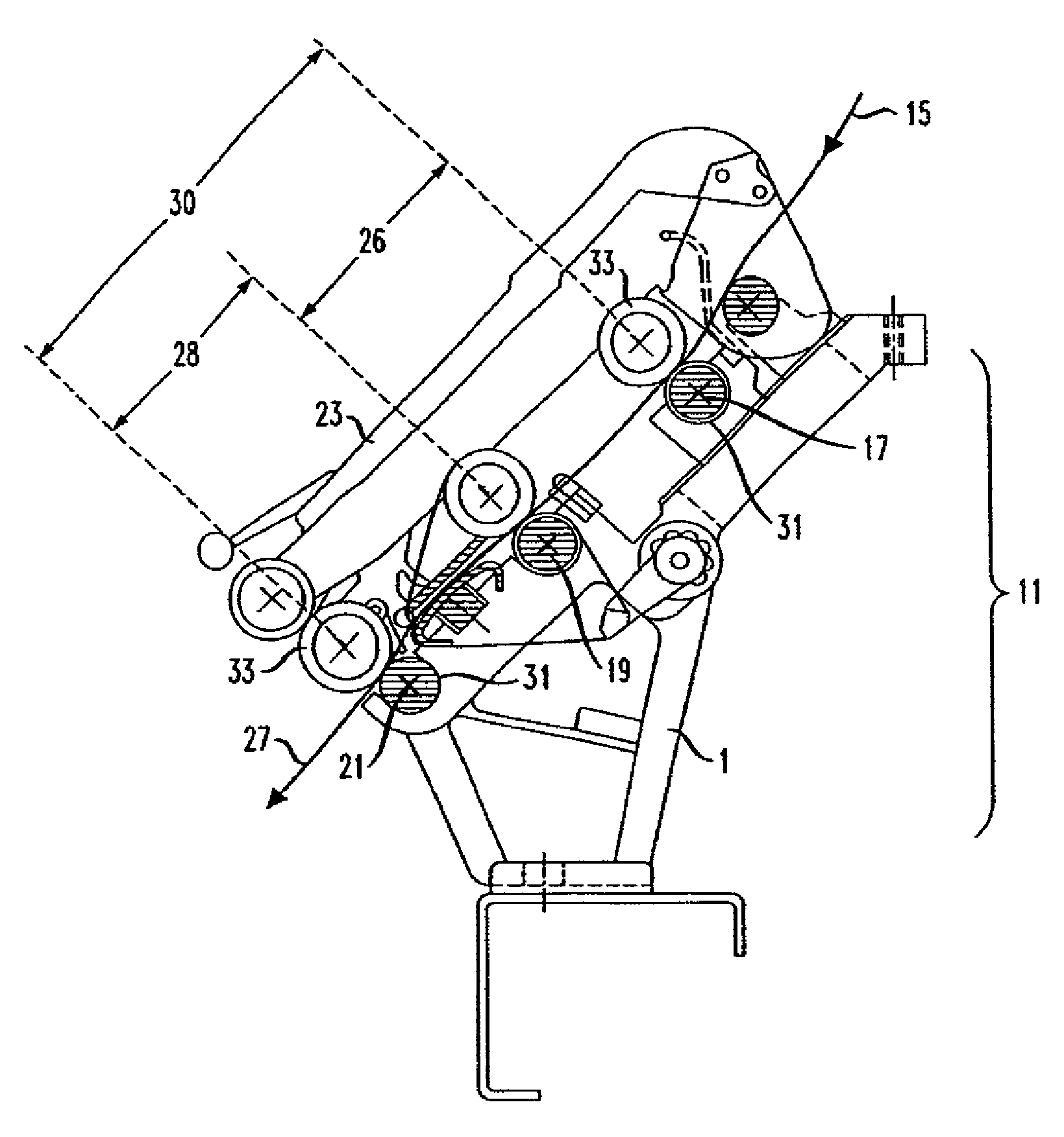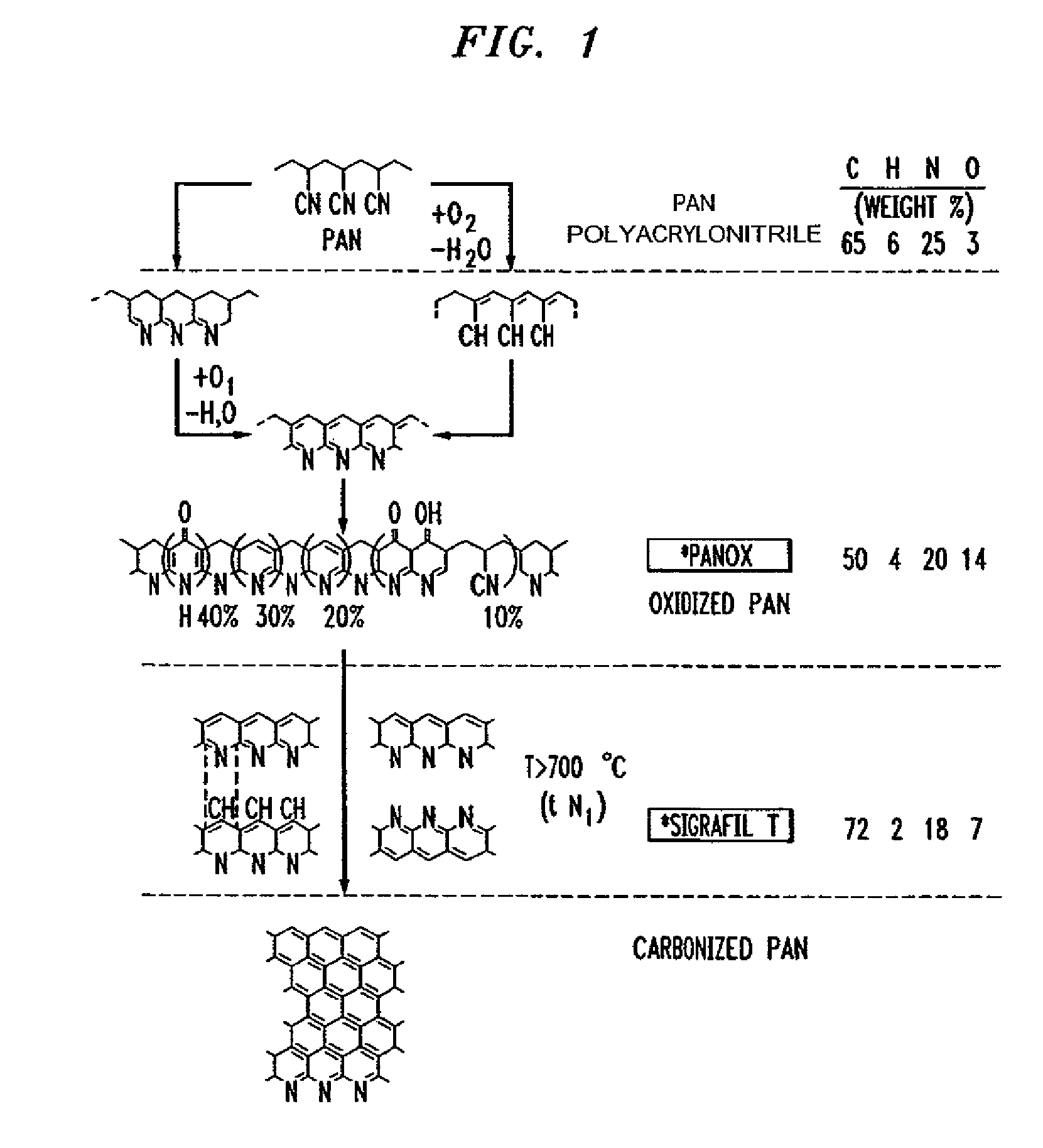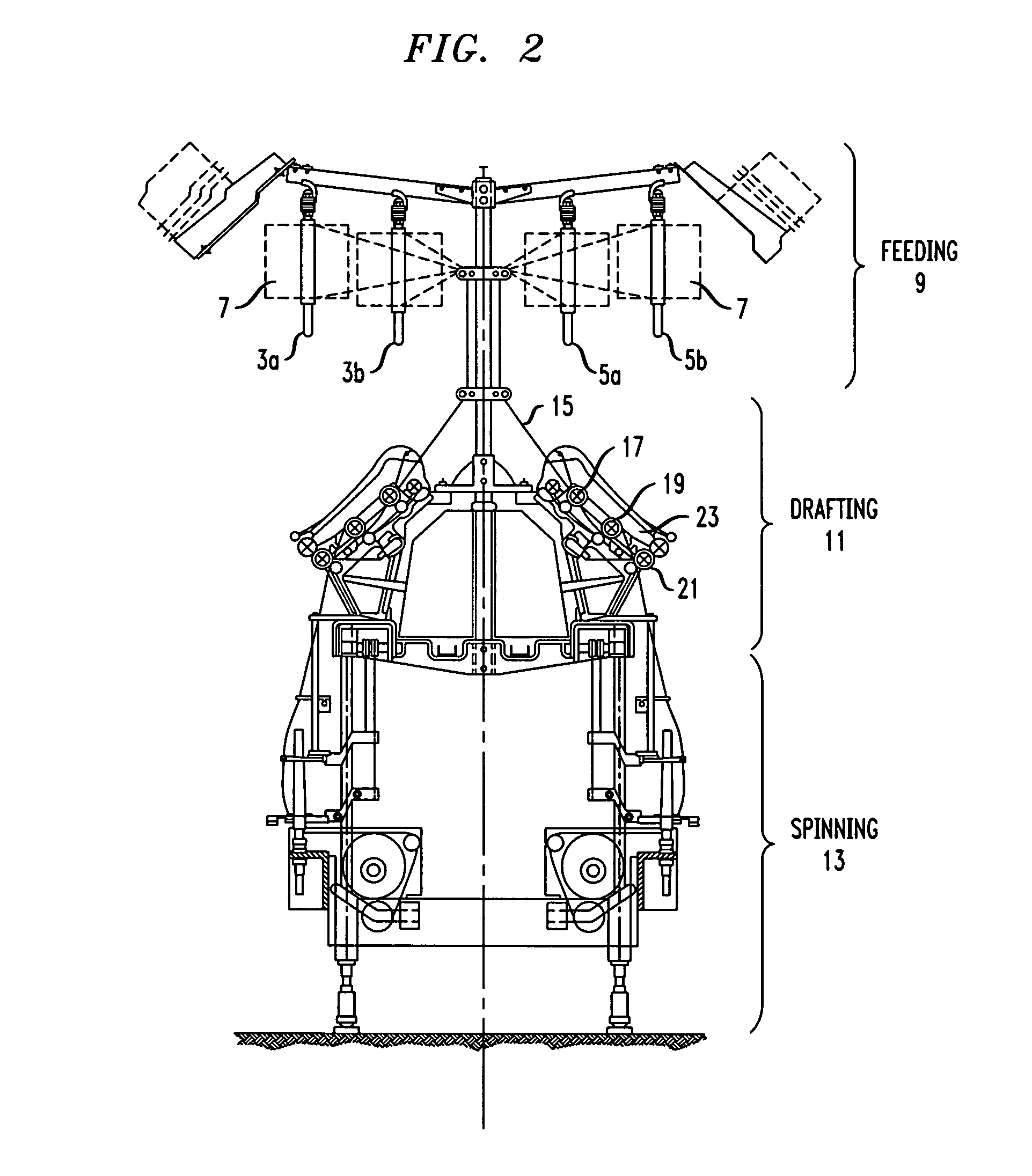Fire retardant compositions and methods and apparatuses for making the same
a composition and flame retardant technology, applied in the direction of open-end spinning machines, yarn, transportation and packaging, etc., can solve the problems of oxidized pan carbon fiber strands being prone to abrasion and cutting, laborious processes, inefficient and costly,
- Summary
- Abstract
- Description
- Claims
- Application Information
AI Technical Summary
Benefits of technology
Problems solved by technology
Method used
Image
Examples
examples
[0091]The following are examples of methods for producing the inventive cohesive elongated network of fibers and yarns are intended to be exemplary and not restrictive of the methods, apparatus configurations and products of the invention. The exemplary apparatus for each of the following examples had either two or three pairs of rollers as indicated in each example. All of the rollers attached to the apparatus had the same diameter of 31.84 mm. All of the rollers attached to the pendulum had cots with the same hardness of 75 according to the Shore A hardness scale.
example i
Oxidized PAN Fiber Network Produced from a Tow of 6K Filaments
[0092]The precursor material is an oxidized PAN with a tow size of 6K, a tow denier of 7,200, and tow weight of 0.8 g / meter. Its general physical properties are summarized in Table 1. The precursor material contains parallel filaments of a uniform length equal to the length of tow, which often exceeds 2 meters. The filament is also well organized and aligned longitudinally. Additionally, the precursor fiber has very limited twists, typically less than 5 turns per meter. The oxidized PAN fiber was drafted using the apparatus with two pairs of rollers, the first rollers and last rollers. The distance between two rollers attached to the apparatus was set to about 240 mm. To obtain a draft ratio of 27.2, the speeds of the last and preceding rollers were set at 227 and 8.3 rpm, respectively. The same pressure was applied to both pairs of rollers. The pressure was adjusted to about 28 Kg by varying the weight on the pendulum ca...
example ii
Oxidized PAN Network Produced from a Filamentous Starting Material with a 12K Tow
[0095]The precursor material is an oxidized PAN with a tow size of 12K, a tow denier of 14,400, and tow weight of 1.6 g / meter. Its general physical properties are summarized in Table 1. The precursor material contains parallel filaments of a uniform length equal to the length of tow, which often exceeds 2 meters. Additionally, the filaments of the precursor material has very limited twists, typically less than 5 turns per meter. The oxidized PAN was drafted using the apparatus having only first and last pairs of rollers. The distance between the rollers attached to the apparatus was set to about 240 mm. To obtain a draft ratio of 8, the speeds of the first and last rollers were set at 125 and 15.6 rpm, respectively. The pressures applied onto the first and last rollers were 45 and 50 Kg, respectively. The pressure was adjusted by varying the weight on the pendulum carrier and the position of the pendulu...
PUM
| Property | Measurement | Unit |
|---|---|---|
| length | aaaaa | aaaaa |
| diameter | aaaaa | aaaaa |
| density | aaaaa | aaaaa |
Abstract
Description
Claims
Application Information
 Login to View More
Login to View More - R&D
- Intellectual Property
- Life Sciences
- Materials
- Tech Scout
- Unparalleled Data Quality
- Higher Quality Content
- 60% Fewer Hallucinations
Browse by: Latest US Patents, China's latest patents, Technical Efficacy Thesaurus, Application Domain, Technology Topic, Popular Technical Reports.
© 2025 PatSnap. All rights reserved.Legal|Privacy policy|Modern Slavery Act Transparency Statement|Sitemap|About US| Contact US: help@patsnap.com



